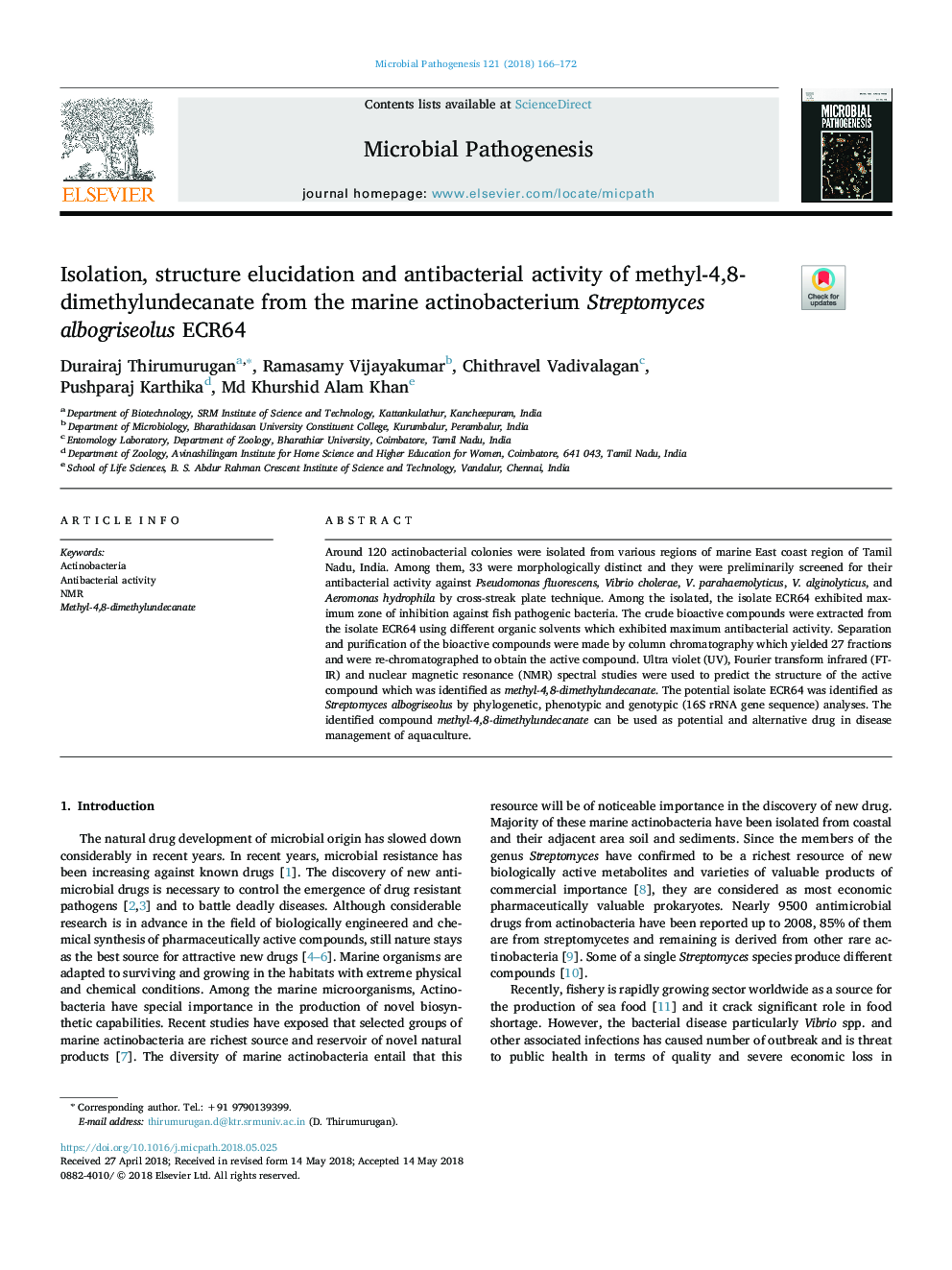| Article ID | Journal | Published Year | Pages | File Type |
|---|---|---|---|---|
| 8749357 | Microbial Pathogenesis | 2018 | 7 Pages |
Abstract
Around 120 actinobacterial colonies were isolated from various regions of marine East coast region of Tamil Nadu, India. Among them, 33 were morphologically distinct and they were preliminarily screened for their antibacterial activity against Pseudomonas fluorescens, Vibrio cholerae, V. parahaemolyticus, V. alginolyticus, and Aeromonas hydrophila by cross-streak plate technique. Among the isolated, the isolate ECR64 exhibited maximum zone of inhibition against fish pathogenic bacteria. The crude bioactive compounds were extracted from the isolate ECR64 using different organic solvents which exhibited maximum antibacterial activity. Separation and purification of the bioactive compounds were made by column chromatography which yielded 27 fractions and were re-chromatographed to obtain the active compound. Ultra violet (UV), Fourier transform infrared (FT-IR) and nuclear magnetic resonance (NMR) spectral studies were used to predict the structure of the active compound which was identified as methyl-4,8-dimethylundecanate. The potential isolate ECR64 was identified as Streptomyces albogriseolus by phylogenetic, phenotypic and genotypic (16S rRNA gene sequence) analyses. The identified compound methyl-4,8-dimethylundecanate can be used as potential and alternative drug in disease management of aquaculture.
Related Topics
Life Sciences
Immunology and Microbiology
Microbiology
Authors
Durairaj Thirumurugan, Ramasamy Vijayakumar, Chithravel Vadivalagan, Pushparaj Karthika, Md Khurshid Alam Khan,
